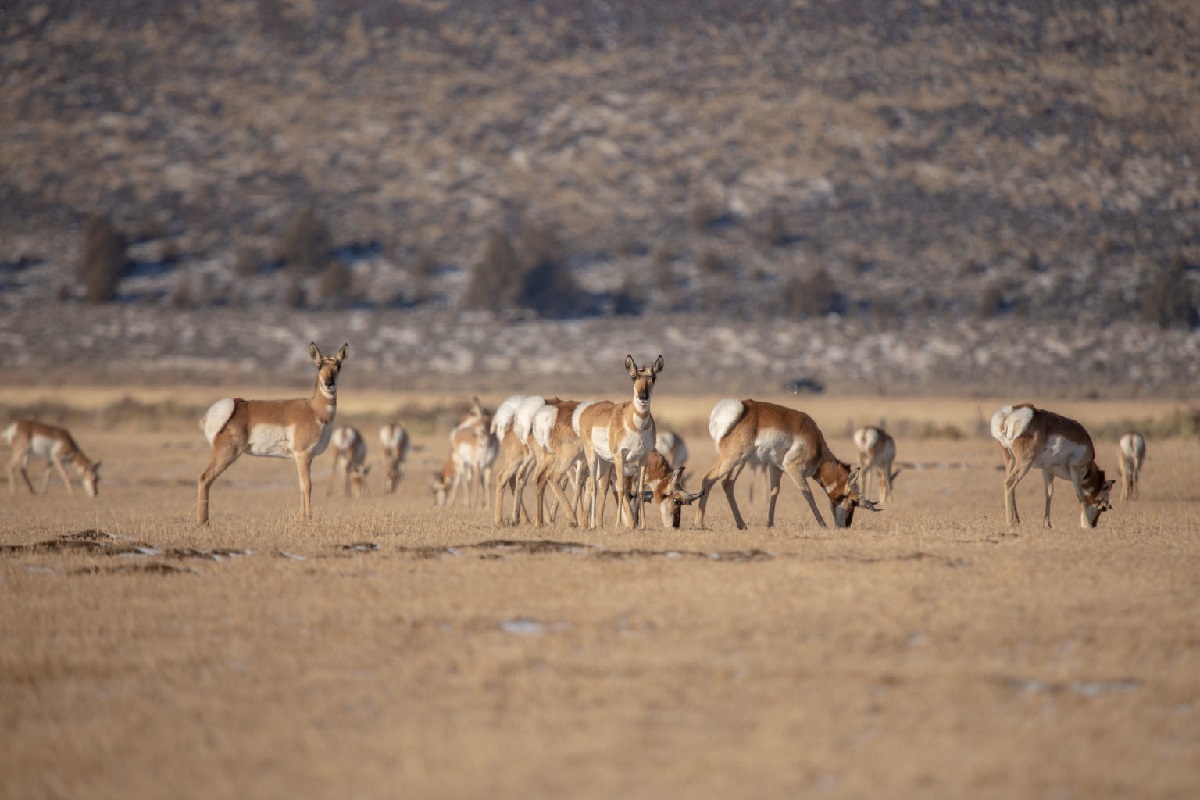Secrets Of Pronghorn Migrations In Wyoming

Have you ever wondered why pronghorn migrations in Wyoming are so special? These incredible animals travel hundreds of miles each year, making one of the longest land migrations in North America. Their journey takes them through diverse landscapes, from the high plains to mountain valleys. Along the way, they face many challenges, including harsh weather, predators, and human-made obstacles. Yet, they persist, driven by instinct and the need for food and shelter. Understanding their migration patterns helps scientists protect these amazing creatures and the habitats they rely on. Join us as we explore the wonders of pronghorn migrations in Wyoming.
The Great Migration: An Overview
Pronghorns, often mistaken for antelope, embark on one of North America's most remarkable migrations. Each year, these swift creatures travel hundreds of miles across Wyoming's diverse landscapes. This journey, driven by the search for food and suitable breeding grounds, showcases nature's resilience and beauty.
Key Migration Routes
Understanding the pronghorn migration requires knowing the main routes they take. These paths are vital for their survival, connecting summer and winter ranges.
Green River Basin to Grand Teton National Park
This route spans over 150 miles, making it one of the longest terrestrial migrations in the Western Hemisphere. Pronghorns navigate through valleys, rivers, and mountain passes, showcasing their endurance.Red Desert to Hoback Basin
Covering approximately 100 miles, this path is crucial for pronghorns moving from the arid Red Desert to the lush Hoback Basin. Along the way, they face challenges like highways and fences, which conservationists work to mitigate.Path of the Pronghorn
Officially designated as a migration corridor, this route stretches from the Upper Green River Basin to Grand Teton National Park. Efforts to protect this path ensure pronghorns can continue their journey without human-made obstacles.
Challenges Along the Way
Pronghorns encounter numerous obstacles during their migration. These challenges test their resilience and highlight the importance of conservation efforts.
Highways and Roads
Busy highways pose significant risks to migrating pronghorns. Wildlife crossings and underpasses are essential solutions to prevent accidents and ensure safe passage.Fences
Traditional barbed-wire fences can impede pronghorn movement. Modifying these barriers with wildlife-friendly designs helps maintain migration routes.Urban Development
Expanding towns and cities encroach on pronghorn habitats. Strategic urban planning and protected areas are crucial to preserving these migration corridors.
Conservation Efforts
Various organizations and initiatives work tirelessly to protect pronghorn migrations. These efforts are vital for maintaining the ecological balance and ensuring the survival of these iconic animals.
Wildlife Corridors Conservation Act
This legislation aims to identify and protect critical migration routes for pronghorns and other wildlife. By securing these corridors, the act helps maintain biodiversity and ecosystem health.Partnerships with Landowners
Collaborations between conservation groups and private landowners play a significant role in preserving migration paths. Incentives and education encourage landowners to adopt wildlife-friendly practices.Research and Monitoring
Ongoing research and monitoring programs provide valuable data on pronghorn movements and behavior. This information guides conservation strategies and helps address emerging threats.
Witnessing the Migration
Experiencing the pronghorn migration firsthand offers a unique glimpse into nature's wonders. Several locations in Wyoming provide excellent opportunities to observe these incredible journeys.
Grand Teton National Park
This park offers stunning vistas and a chance to see pronghorns during their migration. The park's diverse habitats support a variety of wildlife, making it a prime spot for nature enthusiasts.Seedskadee National Wildlife Refuge
Located along the Green River, this refuge provides critical habitat for migrating pronghorns. Visitors can enjoy birdwatching, hiking, and witnessing the pronghorns' seasonal movements.Red Desert
This vast, arid region is a key part of the pronghorn migration route. Exploring the Red Desert offers a unique opportunity to see pronghorns in their natural environment and appreciate the challenges they face.
The Future of Pronghorn Migrations
The future of pronghorn migrations depends on continued conservation efforts and public awareness. Protecting these majestic animals and their migration routes ensures that future generations can witness this natural spectacle.
The Importance of Pronghorn Migrations
Pronghorn migrations in Wyoming are a fascinating natural event. These animals travel long distances, facing many challenges along the way. Understanding their journey helps us appreciate the delicate balance of nature. It also highlights the need for conservation efforts to protect their habitats.
By learning about pronghorn migrations, we gain insight into the broader ecosystem. This knowledge can guide us in making better decisions for wildlife preservation. Protecting migration routes ensures that pronghorns can continue their incredible journeys for generations to come.
Next time you visit Wyoming, take a moment to think about the pronghorns. Their migrations are a reminder of the beauty and complexity of the natural world. Supporting conservation efforts helps maintain this balance, benefiting both wildlife and humans. Let's work together to ensure these magnificent creatures thrive in their natural habitat.

